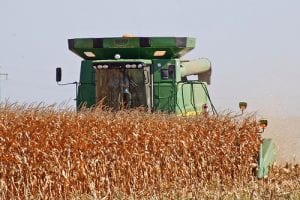What can farmers do to improve their land-use efficiency?
The modern approach suggests using accurate material distribution such as variable rate application techniques, precise weather prediction, and remote sensing for advanced problem-spotting. Satellite monitoring technologies (and crop analysis platforms in particular) are a simple yet cost-efficient entry ticket to the future of farming. Digital tools along with satellite analytics prove especially efficient for big farmers due to good benefit-cost ratio and opportunity to save on scouting. However, it also suits small growers, providing them with a relatively cheap entry to the enterprise-level tech.
Increase profits from your field with crop monitoring platforms.
How satellite imagery and analytics help precision farming transformation?
The most obvious benefit remote sensing and monitoring platforms in particular provide is the comprehensive information that drives field management decision-making. Constantly updated data regarding vegetation health and moisture levels, for example, can point out to spots that need extra watering or fertilization (or have too much of those).
Satellite imagery is also irreplaceable in advanced farming machinery for guidance and variable rate application. For instance, the EOS Crop Monitoring platform features machine learning algorithms that automatically detect and divide fields into crop type category (currently available for Eastern Europe only), calculate field area, and display all the recorded satellite data regarding the field performance and local climate over the past few years upon request. Moreover, it enables to make crop production predictions so that one can make better management decisions.
Machine learning algorithms? What do they have to do with farming?
Satellite imagery takes lots of time to analyze manually, which is why developers train neural networks to automatically recognize the objects’ properties like crop type, field boundaries, and more. The EOS company has proved the data reliability with their comprehensive research and neural network training during the development of the Crop Map project. Crop Map was intended as a part of the World Bank and European Union cooperation with the government of Ukraine to support the agricultural sector transparency in the country. These algorithms helped revealing over 10 million acres of unauthorized land usage area.
- What can EOS Crop Monitoring tell about your field?
- With this platform, you can at least facilitate the following:
- being up-to-date with the state of your crops remotely;
- being aware in advance about weather changes and risks such as cold or heat stress;
- optimizing fertilizer application rates;
- field scouting;
- measuring precise field area;
- forecasting yields.
- How is that possible?
The application allows choosing specific fields to analyze. Then, all the relevant data will be automatically gathered and displayed. Field health information is being monitored through spectral analysis via NDVI, NDSI, and other indices. Precipitation measurements help to assess the soil moisture level while weather indicators (such as wind speed, cloud cover, temperature, and air humidity) will define if that field requires extra care. It can also point out the dependence of culture development on precipitation and temperatures. Interactive graphs with historical weather changes info as well as the forecast for the following days will contribute to field works planning and scheduling. Also, reviewing culture growth historical data allows comparing the regional metrics for yield performance from other fields and forecasting total production volume.
Are there any real cases of using this technology?
EOS Crop Monitoring was the product of choice for Agroprosperis Group (controlled by the American NCH Capital), the largest producer and exporter of wheat, soya, corn and other cultures in the Black Sea region. The company offers financial, growing, storing and exporting services for farmers.
Over the past year, the company has been looking to put Variable Rate Application into practice. By using the satellite imagery they have determined the most productive fields. The decision was to increase the dosage of nitrogen fertilizer to maximize the potential of these fields.
The old strategy implied putting fertilizers evenly distributed among all fields instead of multiplying the output from the best fields and spending fewer resources overall. Plus, 5000-7500 acres of croplands is a huge territory to look after manually. This is why using satellite imagery and crop monitoring was a commercially right decision for the company, as its top-management stated.
How to calculate potential profit from using satellite monitoring?
We know that the average yield in the US from one acre of wheat is around 48 bushels (1306 kg). Let’s review a hypothetical situation. If a 500-acre farm produces 340 tons of crop and the price will average $190 per ton, this field’s owner can lose over $6 000 of income if just 5% of that field fails.
To sum up, satellite analytics and crop monitoring platforms provide an easy and cost-efficient entry into the smart farming trend. Not to mention the fact that they indeed make the life of a farmer easier. And a farm more profitable if the provided information is being used correctly!








 Remember the old adage … Garbage in = Garbage out. Many of us use our yield data to make additional management decisions on our farms such as hybrid or variety selection, fertilizer applications, marketing, etc. Data from an uncalibrated yield monitor can haunt us for many years by leading us into improper decisions with lasting financial affects. In today’s Ag economy we can ill afford any decision with adverse financial implications.
Remember the old adage … Garbage in = Garbage out. Many of us use our yield data to make additional management decisions on our farms such as hybrid or variety selection, fertilizer applications, marketing, etc. Data from an uncalibrated yield monitor can haunt us for many years by leading us into improper decisions with lasting financial affects. In today’s Ag economy we can ill afford any decision with adverse financial implications.

